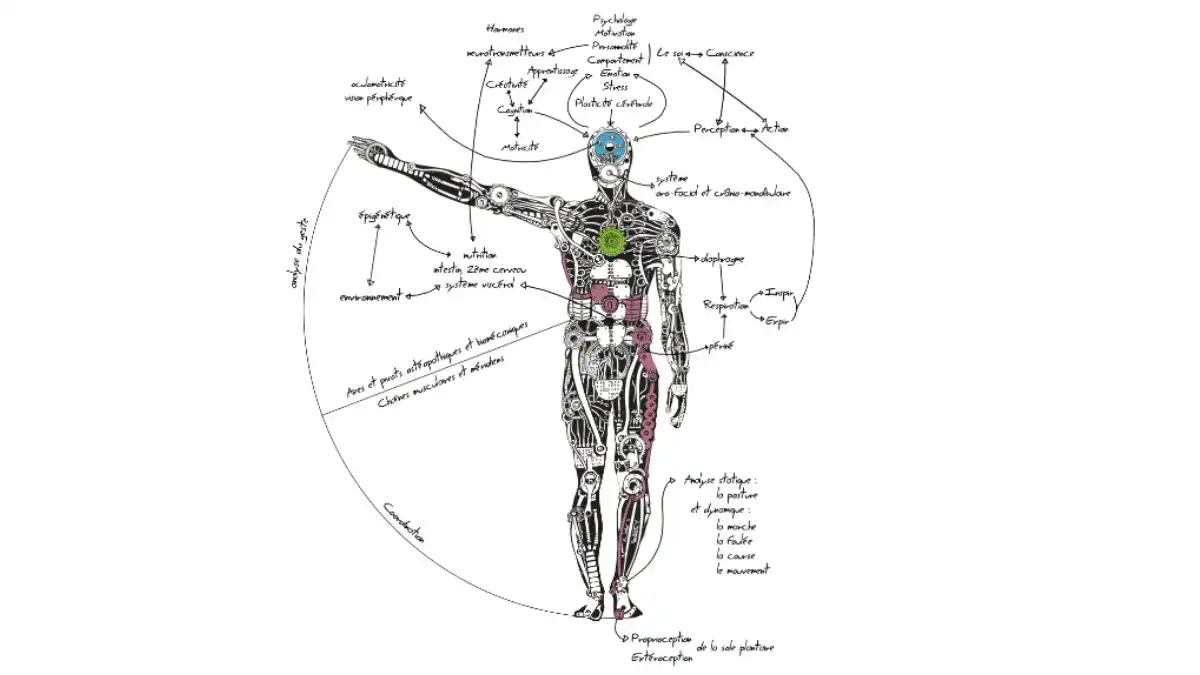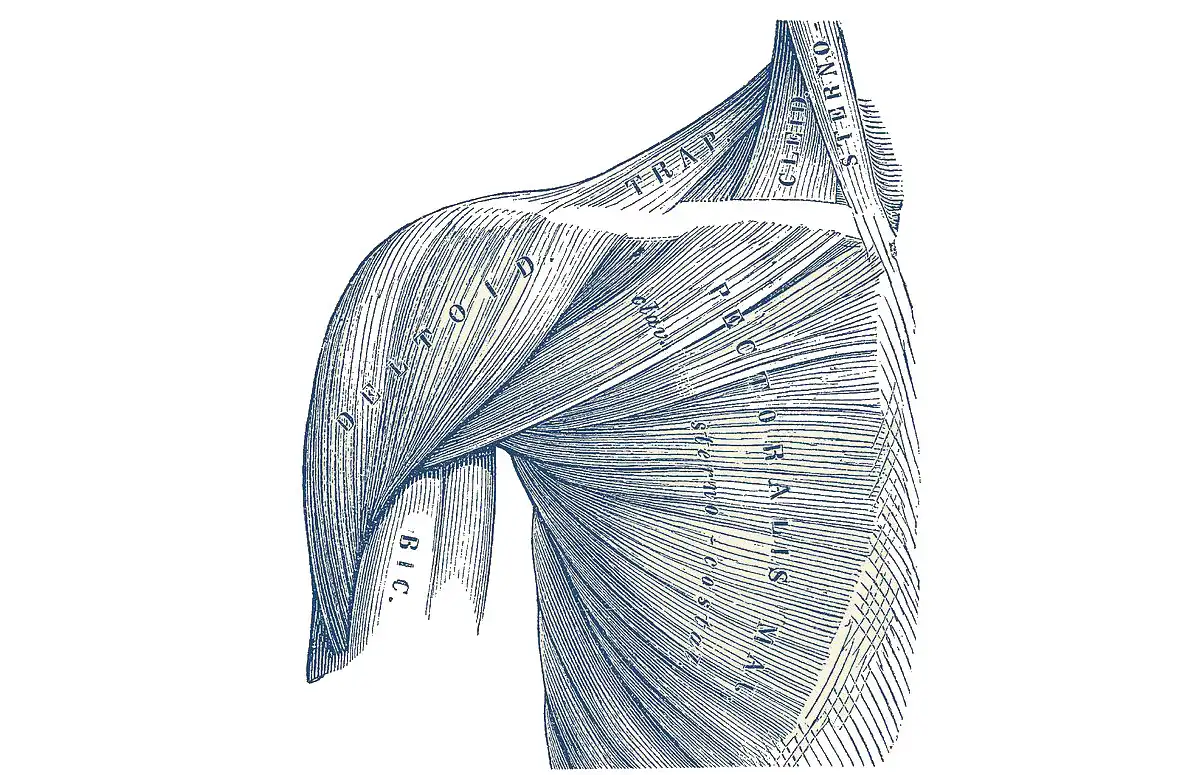Introduction to the Spencer Technique in Osteopathy
Osteopathy is a form of alternative medicine that emphasizes physical manipulation of the body’s muscle tissue and bones. Founded in the late 19th century by Dr. Andrew Taylor Still in the United States, osteopathy is based on the principle that the well-being of an individual depends on their bones, muscles, ligaments, and connective tissue functioning smoothly together. Osteopaths use a range of techniques to enhance physical health, reduce pain, and improve overall body function, with the Spencer Technique being one of the specialized methods employed within this field.
The Spencer Technique in osteopathy is a series of specific shoulder girdle manipulations designed to improve range of motion, decrease pain, and enhance the functional ability of the shoulder joint. Named after Charles Spencer, this technique was developed in the early 20th century and has since become a cornerstone in the osteopathic manipulation of the shoulder. The technique comprises several stages, each targeting different movements of the shoulder, including extension, flexion, rotation, and circumduction. These movements are facilitated through gentle, rhythmic manipulations aimed at reducing stiffness and improving mobility.
The importance of the Spencer Technique within osteopathy cannot be overstated. It is particularly valued for its holistic approach to treating shoulder dysfunctions, which are often complex and multifaceted. By addressing the shoulder joint’s mechanical and functional aspects, the Spencer Technique can lead to significant improvements in pain management, range of motion, and overall quality of life for patients. This method is applicable in various scenarios, from sports injuries and post-surgical rehabilitation to chronic conditions like arthritis and tendinitis.
Applications of the Spencer Technique are diverse, making it a versatile tool in the osteopathic practitioner’s repertoire. It is used not only for direct treatment of shoulder issues but also as a part of a comprehensive treatment plan for conditions that affect the musculoskeletal system as a whole. The technique’s gentle, non-invasive nature makes it suitable for patients of all ages and with various health conditions.
Charles H. Spencer’s Legacy
Charles H. Spencer was a significant figure in the field of osteopathy, particularly known for his contributions to the treatment of shoulder dysfunction through what is now known as the Spencer Technique. While detailed biographical information about him is limited, his legacy in osteopathic medicine is largely tied to his work as a teacher and clinician.
Spencer served as a faculty member at the American School of Osteopathy (now A.T. Still University) in Kirksville, Missouri. His role as an educator allowed him to influence many osteopathic students, passing on his knowledge and techniques that emphasized a hands-on, holistic approach to patient care. His teaching emphasized the importance of understanding the body’s biomechanics, particularly in relation to the musculoskeletal system.
Charles H. Spencer did not leave behind a large body of published work, and there is no widely known article or book solely authored by him. His legacy primarily comes from the practical techniques and teachings he developed during his time as a faculty member at the American School of Osteopathy.
Most of what is known about Spencer and his techniques has been passed down through osteopathic education, rather than through extensive written documentation by Spencer himself. The Spencer Technique has been described and elaborated upon in various osteopathic textbooks and articles written by other practitioners and educators. These secondary sources detail the technique he developed, preserving his contribution to osteopathy.
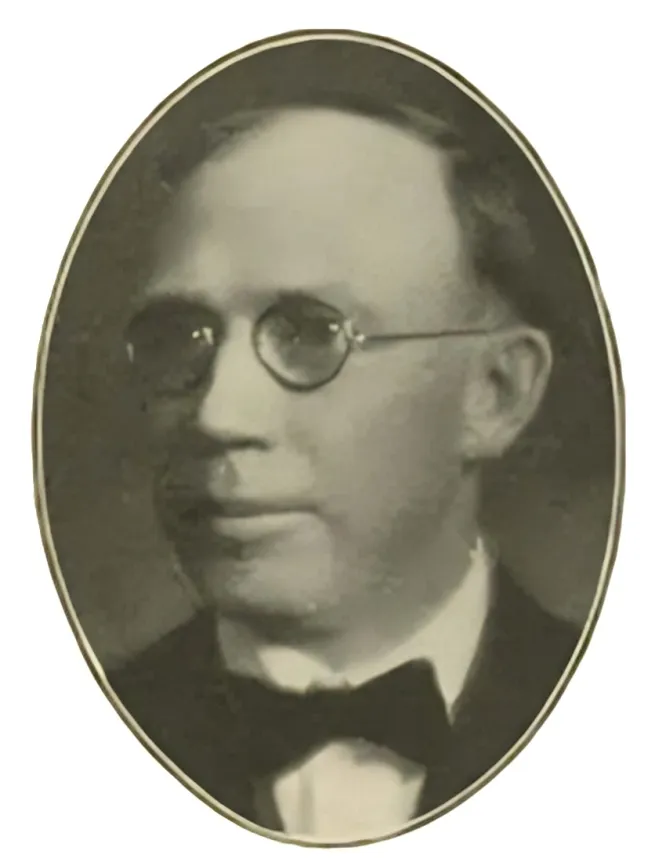
Fundamental Principles of the Spencer Technique
The Spencer Technique is a specialized approach within the field of osteopathic manipulative treatment, focusing on the restoration and maintenance of the optimal range of motion and function of the shoulder joint. This technique is grounded in a deep understanding of the biomechanics and physiology of the shoulder, alongside core concepts that draw from the broader principles of osteopathy. Below, we delve into the fundamental principles of the Spencer Technique, exploring its core concepts, theoretical foundations, biomechanics, and physiological considerations.
Core Concepts and Theoretical Foundations
At the heart of the Spencer Technique are several core concepts that guide its application:
- Holism: This principle posits that the body functions as a single, integrated unit. In the context of the Spencer Technique, this means that treating the shoulder cannot be isolated from the rest of the body. The technique considers the interplay between the shoulder and the body’s other components, ensuring a holistic approach to treatment.
- Self-Healing Mechanisms: Osteopathy holds that the body possesses inherent mechanisms for self-regulation and healing. The Spencer Technique leverages these mechanisms, aiming to remove barriers to healing such as restricted joint mobility or muscle tension.
- Structure and Function Interrelationship: A key osteopathic principle is the interrelationship between structure and function. The Spencer Technique is designed with an understanding that any alteration in the shoulder’s anatomical structure can significantly impact its function, and vice versa.
Biomechanics and Physiology
The biomechanical and physiological underpinnings of the Spencer Technique are crucial for its effectiveness. Understanding the shoulder’s complex structure and function is essential for applying this technique successfully.
- Joint Kinematics: The shoulder is one of the most mobile joints in the body, allowing for a wide range of movements. The Spencer Technique addresses the biomechanics of this mobility, focusing on the glenohumeral joint, acromioclavicular joint, sternoclavicular joint, and the scapulothoracic articulation. It employs specific manipulative procedures tailored to each of these components to restore normal kinematics and function.
- Muscle and Fascia: The technique also considers the role of muscles and fascia surrounding the shoulder. It addresses any myofascial restrictions and employs methods to normalize muscle tone and improve fascial mobility, which are vital for maintaining shoulder mobility and function.
- Neurovascular Components: The Spencer Technique acknowledges the importance of the neurovascular bundle in the shoulder region. It employs gentle manipulations to ensure that these structures are not impinged, promoting optimal blood flow and nerve function in the shoulder.
- Lymphatic System: Enhancing lymphatic drainage in the shoulder area is another aspect of the Spencer Technique. By improving lymphatic flow, the technique aids in reducing inflammation and promoting the healing of tissues.
Preparatory Indications
Proper patient assessment is crucial for determining the appropriateness of the Spencer Technique for each individual. This involves evaluating the patient’s condition, medical history, and specific shoulder dysfunction to tailor the treatment plan accordingly.
Medical History and Physical Examination
- Comprehensive History:
- Obtain a detailed medical history, including past injuries, surgeries, or chronic conditions that may affect the shoulder.
- Assess for systemic diseases such as rheumatoid arthritis or connective tissue disorders that might influence treatment.
- Pain Assessment:
- Determine the location, duration, and intensity of the shoulder pain.
- Identify any aggravating or alleviating factors.
- Functional Limitations:
- Evaluate the patient’s daily activities and any limitations due to shoulder dysfunction.
- Assess the impact of shoulder issues on work, sports, and hobbies.
- Physical Examination:
- Conduct a thorough physical examination of the shoulder, assessing range of motion, strength, and stability.
- Evaluate for tenderness, swelling, or deformities.
- Use specific orthopedic tests to identify potential underlying pathologies, such as rotator cuff tears or labral injuries.
Indications for the Spencer Technique
The Spencer Technique can be beneficial for a variety of shoulder conditions, including:
- Adhesive Capsulitis (“Frozen Shoulder”):
- Helps improve joint mobility and reduce stiffness.
- Rotator Cuff Injuries:
- Assists in rehabilitation by enhancing range of motion and promoting healing.
- Shoulder Impingement Syndrome:
- Reduces pain and increases mobility through gentle manipulation.
- Post-Surgical Rehabilitation:
- Aids in restoring shoulder function after surgery, with the guidance of a healthcare professional.
- General Shoulder Stiffness:
- Improves flexibility and relieves discomfort.
- Subacromial Bursitis:
- Reduces inflammation and enhances mobility in the subacromial space.
- Glenohumeral Joint Osteoarthritis:
- Alleviates pain and improves function in the presence of degenerative changes.
Contraindications and Safety Measures
While the Spencer Technique is generally safe and effective, certain contraindications and precautions must be observed to prevent harm and ensure patient safety.
Contraindications
- Acute Shoulder Injuries:
- Avoid the technique in cases of acute fractures, dislocations, or severe soft tissue injuries.
- Delay treatment until the acute phase has resolved and stability is restored.
- Infections or Inflammatory Conditions:
- Contraindicated in the presence of active infections, such as septic arthritis or acute inflammatory conditions.
- Wait for the resolution of infections before proceeding with treatment.
- Severe Osteoporosis:
- Caution is advised in patients with severe osteoporosis, as manipulation may pose a risk of fracture.
- Malignancy:
- Avoid treating areas with known malignancies to prevent exacerbating the condition.
- Neurological Disorders:
- Exercise caution in patients with neurological disorders affecting the shoulder, ensuring that manipulation does not worsen the condition.
Safety Measures
- Patient Communication:
- Maintain open communication with the patient, explaining each step of the procedure and obtaining consent.
- Encourage the patient to voice any discomfort or concerns during the treatment.
- Pain Management:
- Ensure that the technique is performed within the patient’s pain tolerance.
- Use gentle, controlled movements to avoid causing additional pain or injury.
- Practitioner Positioning:
- Utilize proper body mechanics to avoid practitioner fatigue and ensure precise manipulation.
- Position yourself to have optimal control and leverage during each step of the technique.
- Patient Support:
- Provide adequate support to the patient’s arm and shoulder throughout the procedure.
- Use cushions or pillows to enhance patient comfort and prevent strain.
- Monitoring and Feedback:
- Continuously monitor the patient’s response to the treatment, adjusting techniques as needed.
- Seek feedback from the patient to ensure their comfort and satisfaction.
The Spencer Technique: Step-by-Step Procedures
Positioning and Initial Setup
Before beginning the Spencer Technique, ensure proper patient positioning and setup:
- Patient Position:
- The patient should be seated comfortably on a table or bed with feet flat on the floor.
- Ensure the patient’s shoulder is relaxed, with the arm resting on their lap or supported by the practitioner’s hand.
- Practitioner Position:
- The practitioner stands or sits beside the patient, ensuring proper body mechanics to avoid fatigue and ensure precise movements.
- The practitioner’s hands should be clean and warm, and they should maintain clear communication with the patient throughout the procedure.
- Warm-up:
- Gently move the patient’s shoulder through its range of motion to assess any restrictions or discomfort.
- Apply heat or a warm towel to the shoulder area if necessary to relax the muscles before starting.
- Patient Consent and Comfort:
- Explain each step of the procedure to the patient, ensuring they understand and consent to the treatment.
- Encourage the patient to communicate any discomfort or pain during the procedure.
The Seven Steps of the Spencer Technique Explained
The Spencer Technique involves seven specific steps, each targeting different aspects of shoulder movement. Here’s a detailed explanation of each step:
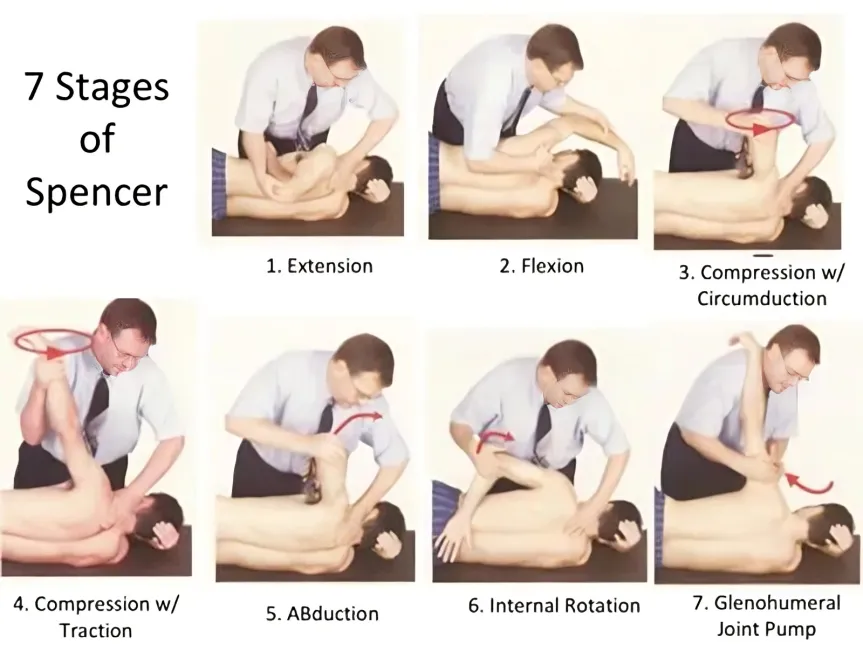
Step 1: Extension with Elbow Flexion
- Objective: To improve shoulder extension and lengthen anterior shoulder structures.
- Technique:
- Extend the patient’s shoulder by gently pulling the arm backward while maintaining a flexed elbow.
- Stabilize the shoulder girdle to prevent compensation from scapular movement.
- Use smooth, rhythmic motions to increase the shoulder’s extension gradually.
- Variations: Alter the angle of extension or incorporate gentle oscillations to accommodate varying levels of stiffness.
Step 2: Flexion with Elbow Extension
- Objective: To enhance shoulder flexion and stretch posterior shoulder structures.
- Technique:
- Extend the patient’s elbow and flex the shoulder by raising the arm forward and upward.
- Provide support under the arm while gently pushing it toward the head, increasing the flexion angle.
- Encourage deep breathing to facilitate muscle relaxation during the stretch.
- Variations: Incorporate passive and active range of motion exercises to enhance flexibility and muscle engagement.
Step 3: Circumduction with Compression
- Objective: To improve joint mobility and lubricate the glenohumeral joint by promoting synovial fluid circulation.
- Technique:
- Stand at the side of the patient, and grasp the patient’s elbow with one hand while placing the other hand on the shoulder to stabilize it.
- Compress the humeral head into the glenoid fossa by gently pushing the elbow upward.
- Perform circumduction by moving the patient’s arm in circular motions. Start with small circles, gradually increasing the diameter.
- Variations: Adjust the pressure and speed of circumduction based on the patient’s comfort and tolerance.
Step 4: Circumduction with Traction
- Objective: To increase joint space and reduce adhesions within the shoulder joint capsule.
- Technique:
- Maintain the hand positioning from Step 1, but instead of compressing, apply gentle traction by pulling the elbow away from the shoulder.
- Perform circumduction with the arm, focusing on a smooth, controlled motion.
- Gradually increase the circle’s diameter as the patient’s comfort level allows.
- Variations: Traction can be increased or decreased to match the patient’s needs, and the speed of circumduction can be adjusted accordingly.
Step 5: Horizontal Abduction with External Rotation
- Objective: To stretch the anterior shoulder muscles and improve external rotation.
- Technique:
- Flex the patient’s arm to 90 degrees and move it out to the side, abducting it horizontally.
- Stabilize the scapula, and use your other hand to externally rotate the humerus by rotating the forearm away from the body.
- Apply gentle pressure to enhance the stretch, ensuring the patient remains comfortable.
- Variations: Experiment with different angles of abduction to better isolate specific muscle fibers that may be restricting movement.
Step 6: Horizontal Adduction with Internal Rotation
- Objective: To stretch the posterior shoulder muscles and enhance internal rotation capabilities.
- Technique:
- Flex the patient’s arm to 90 degrees at the shoulder and elbow, bringing the arm across the chest.
- Stabilize the scapula with one hand, and use the other hand to gently adduct the arm across the patient’s body.
- Internally rotate the humerus by gently rotating the forearm towards the patient’s abdomen.
- Variations: This step can be performed with varying degrees of shoulder flexion to target different muscle groups, depending on the specific restrictions observed.
Step 7: Pumping
- Objective: To stimulate lymphatic and venous drainage, promoting circulation and reducing edema.
- Technique:
- Position the patient’s arm in slight abduction and flexion, stabilizing the shoulder with one hand.
- Grasp the patient’s elbow and apply rhythmic compression, pushing the humeral head into the glenoid fossa.
- Maintain a steady rhythm, ensuring the patient remains relaxed and comfortable throughout the process.
- Variations: Adjust the pumping rate to suit the patient’s tolerance, using gentle oscillations to enhance drainage.
Tips for Effective Practice
- Communication: Maintain clear communication with the patient, ensuring they are comfortable and understand each step.
- Customization: Tailor the Spencer Technique to each patient’s specific needs, adjusting pressure, speed, and range of motion based on their condition and feedback.
- Practice Regularly: Regularly practice and refine your technique to enhance skill and effectiveness. Consider working with a mentor or attending workshops to gain new insights and perspectives.
- Holistic Approach: Integrate the Spencer Technique into a broader treatment plan that addresses underlying causes of shoulder dysfunction, such as posture, ergonomics, and lifestyle factors.
- Patient Education: Educate patients on home exercises and lifestyle changes that can complement the Spencer Technique, encouraging them to take an active role in their recovery.
- Follow-up: Schedule follow-up appointments to monitor progress, adjust treatment plans, and ensure sustained improvement.
The Spencer Technique for the hip
While it started as a shoulder treatment, the principles of the Spencer technique have been applied to other joints, such as the hip, due to their effectiveness in improving joint function and relieving discomfort.
Step 1: Patient Positioning
- Patient: Lying on their side with the affected hip facing up.
- Practitioner: Standing at the patient’s side, facing the patient.
Step 2: Initial Assessment
- Place one hand on the iliac crest to stabilize the pelvis.
- Use the other hand to hold the patient’s knee and gently move the hip through its range of motion to assess restriction, pain, or tightness.
Step 3: Flexion
- Flex the patient’s hip by bringing the knee towards the chest.
- Use your hand on the iliac crest to stabilize the pelvis.
- Perform slow, rhythmic repetitions to the patient’s tolerance.
Step 4: Extension
- Extend the patient’s hip by moving the leg backward.
- Keep the pelvis stabilized with your hand on the iliac crest.
- Again, perform slow, rhythmic movements to the patient’s tolerance.
Step 5: Circumduction with Compression
- Flex the hip slightly and introduce circumduction by moving the leg in circular motions while applying gentle compression toward the acetabulum.
- Perform both clockwise and counterclockwise motions.
Step 6: Circumduction with Traction
- Continue circumduction, but this time apply gentle traction to the leg, pulling it away from the acetabulum.
- Perform both clockwise and counterclockwise motions.
Step 7: Internal Rotation
- Flex the knee and internally rotate the hip by bringing the foot outward.
- Stabilize the pelvis to avoid compensatory movements.
- Perform several rhythmic repetitions.
Step 8: External Rotation
- Flex the knee and externally rotate the hip by bringing the foot inward.
- Stabilize the pelvis to prevent compensatory movements.
- Perform several rhythmic repetitions.
Step 9: Abduction
- Extend the patient’s leg slightly and abduct the hip by moving the leg away from the midline.
- Stabilize the pelvis during the movement.
- Perform rhythmic repetitions.
Step 10: Adduction
- Flex the hip slightly and adduct by moving the leg towards the midline, across the body.
- Stabilize the pelvis.
- Perform rhythmic repetitions.
Step 11: Post-Treatment Reassessment
- Reassess the hip’s range of motion and compare it to the initial assessment.
- Check for any residual pain, restriction, or discomfort.
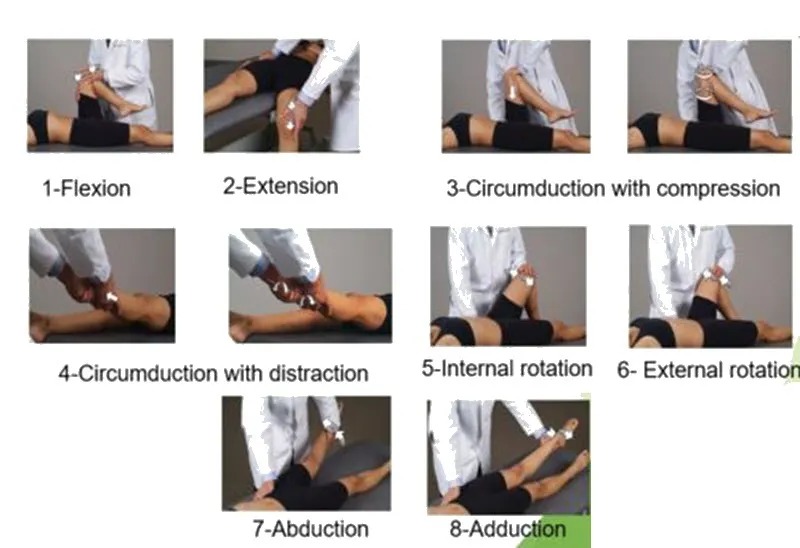
Clinical Applications of the Spencer Technique
Case Study 1: Adhesive Capsulitis (“Frozen Shoulder”)
Background:
A 55-year-old female patient presented with severe shoulder pain and restricted range of motion in her right shoulder, diagnosed as adhesive capsulitis. Her condition significantly affected her daily activities, including dressing and reaching overhead.
Treatment Plan:
The Spencer Technique was incorporated into a comprehensive treatment plan that included stretching exercises and home care advice. The technique was performed weekly for six weeks, with adjustments based on patient progress.
Outcome:
- Improved Range of Motion: The patient’s shoulder abduction increased from 60 to 150 degrees, and external rotation improved significantly.
- Pain Reduction: The patient reported a 70% reduction in pain on the Visual Analog Scale (VAS).
- Functional Improvement: The patient regained the ability to perform daily tasks without significant discomfort.
Conclusion:
The Spencer Technique effectively improved shoulder mobility and reduced pain, providing a non-invasive solution for adhesive capsulitis.
Case Study 2: Rotator Cuff Tendinopathy in an Athlete
Background:
A 30-year-old male professional swimmer experienced persistent shoulder pain and weakness due to rotator cuff tendinopathy, hindering his performance in competitions.
Treatment Plan:
The patient underwent bi-weekly sessions of the Spencer Technique, combined with strengthening exercises and anti-inflammatory measures, for a period of eight weeks.
Outcome:
- Enhanced Strength and Endurance: Muscle strength increased, allowing the patient to resume competitive swimming without discomfort.
- Pain Alleviation: The patient reported an 80% decrease in pain levels.
- Return to Sport: The patient returned to training and competition with improved shoulder function.
Conclusion:
The Spencer Technique was instrumental in the athlete’s recovery, restoring shoulder strength and enabling a return to high-level performance.
Case Study 3: Post-Surgical Rehabilitation
Background:
A 40-year-old male underwent arthroscopic surgery for a shoulder impingement syndrome. Post-surgery, he experienced stiffness and limited mobility.
Treatment Plan:
The Spencer Technique was employed as part of a multidisciplinary rehabilitation program, including osteopathy and occupational therapy, over a three-month period.
Outcome:
- Restoration of Motion: The patient’s shoulder motion returned to near-normal levels, with significant improvement in flexion and rotation.
- Scar Tissue Management: The technique aided in minimizing scar tissue formation, enhancing mobility.
- Functional Recovery: The patient successfully returned to daily activities and light sports.
Conclusion:
The Spencer Technique facilitated effective post-surgical rehabilitation, contributing to a holistic recovery process.
Application in Sports Medicine and Rehabilitation
The Spencer Technique’s efficacy extends to sports medicine and rehabilitation, where it is employed to address various shoulder conditions common among athletes and active individuals.
Injury Prevention and Management
- Shoulder Stability: Enhancing joint stability reduces the risk of injuries such as dislocations and labral tears.
- Flexibility Maintenance: Regular application helps maintain optimal shoulder flexibility, preventing stiffness.
- Pain Management: The technique offers a non-pharmacological approach to managing chronic shoulder pain.
Performance Enhancement
- Increased Range of Motion: Athletes benefit from improved mobility, translating to better performance in sports requiring overhead activities, such as swimming, tennis, and baseball.
- Strength and Coordination: By promoting muscle balance and coordination, the Spencer Technique supports overall athletic performance.
Rehabilitation of Sports Injuries
- Rotator Cuff Rehabilitation: The technique aids in recovering from rotator cuff strains and tears by facilitating healing and restoring function.
- Impingement Syndrome Treatment: By improving scapular mechanics and joint mobility, the technique alleviates impingement symptoms.
- Post-Operative Recovery: As demonstrated in case studies, the Spencer Technique plays a crucial role in post-surgical rehabilitation, ensuring comprehensive recovery and return to sport.
Enhancing Athlete Wellness
- Holistic Approach: Integrating the Spencer Technique into sports medicine supports a holistic approach to athlete wellness, addressing both physical and psychological aspects.
- Customized Treatment: Tailoring the technique to individual athlete needs maximizes therapeutic benefits.
Advanced Techniques and Variations
Modifying the Spencer Technique for Specific Conditions
Rotator Cuff Injuries
Adaptation Strategy:
- Focus on Traction and Compression: Emphasize steps involving gentle traction and compression to facilitate healing and reduce strain on injured tendons.
- Gentle Mobilization: Reduce the amplitude of movements to accommodate pain and inflammation, particularly in acute phases.
- Soft Tissue Techniques: Incorporate soft tissue techniques before initiating the Spencer Technique to relax muscles and improve flexibility.
Specific Modifications:
- Step 1: Circumduction with Compression
- Use smaller, controlled circles to prevent overstressing the rotator cuff.
- Incorporate myofascial release to aid in relaxing the rotator cuff muscles.
- Step 4: Horizontal Abduction with External Rotation
- Limit external rotation to avoid exacerbating pain in the supraspinatus tendon.
- Use proprioceptive neuromuscular facilitation (PNF) to enhance neuromuscular coordination.
Adhesive Capsulitis (“Frozen Shoulder”)
Adaptation Strategy:
- Focus on Passive Range of Motion: Gradually increase the passive range of motion to break up adhesions and restore mobility.
- Progressive Stretching: Emphasize stretching techniques tailored to the patient’s pain threshold and progress.
- Prolonged Hold Techniques: Implement prolonged hold techniques to encourage relaxation and improve shoulder joint flexibility.
Specific Modifications:
- Step 3: Horizontal Adduction with Internal Rotation
- Perform slow and gentle internal rotations, focusing on loosening the joint capsule.
- Utilize strain-counterstrain techniques to reduce muscle guarding.
- Step 7: Pumping
- Use the lymphatic pump technique to improve circulation and decrease edema around the joint.
- Combine with muscle energy techniques (MET) to encourage gentle stretching of tightened structures.
Shoulder Instability
Adaptation Strategy:
- Stabilization Focus: Modify movements to support joint stability and prevent dislocations or subluxations.
- Strengthening Techniques: Integrate strengthening exercises to enhance muscle support around the shoulder joint.
- Joint Proprioception: Incorporate proprioceptive exercises to enhance joint awareness and prevent recurrent instability.
Specific Modifications:
- Step 2: Circumduction with Traction
- Apply minimal traction to avoid excessive movement in hypermobile joints.
- Emphasize isometric contractions to stabilize the joint.
- Step 5: Extension with Elbow Flexion
- Incorporate scapular stabilization exercises to support the glenohumeral joint.
- Use balanced ligamentous tension techniques to encourage proper joint alignment.
Bursitis
Adaptation Strategy:
- Pain Management: Prioritize techniques that minimize irritation of the bursa and reduce inflammation.
- Soft Tissue Techniques: Apply gentle soft tissue work to alleviate tension and improve circulation around the bursa.
- Gentle Mobilization: Focus on gentle mobilization to maintain range of motion without exacerbating inflammation.
Specific Modifications:
- Step 6: Flexion with Elbow Extension
- Perform slow, controlled movements to prevent friction on the inflamed bursa.
- Utilize indirect techniques to promote pain-free motion.
- Step 7: Pumping
- Employ lymphatic drainage techniques to facilitate fluid movement away from the bursa.
- Combine with craniosacral therapy to support the body’s natural healing processes.
Integrating Other Osteopathic Techniques
Integrating other osteopathic techniques with the Spencer Technique can provide a more holistic and effective approach to treating shoulder dysfunctions. Here’s how various techniques can be harmoniously combined to enhance patient outcomes.
Myofascial Release (MFR)
- Integration Points:
- Before the Spencer Technique: Apply MFR to relax the fascia and prepare the shoulder for manipulation.
- After the Spencer Technique: Use MFR to release any residual tension and support improved mobility.
- Benefits:
- Enhances tissue pliability and reduces restrictions.
- Promotes relaxation and pain relief, especially in conditions like myofascial pain syndrome.
Muscle Energy Technique (MET)
- Integration Points:
- Combine with specific Spencer steps to engage the patient’s active participation in mobilizing the shoulder joint.
- Use during Step 4 (Horizontal Abduction with External Rotation) to enhance muscle coordination and strength.
- Benefits:
- Strengthens weakened muscles and improves flexibility.
- Facilitates neuromuscular re-education, particularly in rehabilitation settings.
High-Velocity, Low-Amplitude (HVLA) Techniques
- Integration Points:
- Apply HVLA techniques selectively to address any joint restrictions that limit the effectiveness of the Spencer Technique.
- Use in conjunction with Step 5 (Extension with Elbow Flexion) for patients with specific joint restrictions.
- Benefits:
- Restores joint alignment and range of motion.
- Provides quick relief from mechanical restrictions in the shoulder complex.
Counterstrain Techniques
- Integration Points:
- Integrate counterstrain techniques for muscles associated with shoulder pain to minimize discomfort during the Spencer Technique.
- Use with Step 1 (Circumduction with Compression) to enhance relaxation and tissue extensibility.
- Benefits:
- Reduces muscle spasms and pain.
- Offers a gentle approach for patients with high sensitivity to pain.
Craniosacral Therapy
- Integration Points:
- Apply craniosacral therapy post-Spencer Technique to support the body’s self-regulation and healing processes.
- Use to address systemic issues that may contribute to shoulder dysfunction.
- Benefits:
- Enhances overall body balance and health.
- Supports emotional and psychological well-being, important for comprehensive healing.
Visceral Manipulation
- Integration Points:
- Integrate visceral manipulation for patients with referred shoulder pain due to visceral dysfunctions.
- Use in conjunction with Step 7 (Pumping) to improve systemic circulation and organ function.
- Benefits:
- Addresses the underlying visceral causes of musculoskeletal pain.
- Promotes holistic healing by improving organ mobility and function.
Patient Management and Follow-Up
Immediate Post-Treatment Care
Rest and Recovery
- Avoid Overexertion: Patients should be advised to rest the shoulder and avoid strenuous activities for 24-48 hours post-treatment to allow tissues to heal and adapt.
- Ice and Elevation: Applying ice to the treated area can help reduce any inflammation or discomfort experienced after the treatment. Elevating the shoulder may also help reduce swelling.
Hydration and Nutrition
- Hydration: Encourage patients to stay well-hydrated, as adequate fluid intake aids in muscle recovery and toxin elimination.
- Balanced Diet: A balanced diet rich in vitamins and minerals, particularly those supporting joint health (e.g., omega-3 fatty acids, vitamin D, calcium), can facilitate recovery.
Home Exercise Program
Stretching Exercises
- Gentle Shoulder Stretches: Recommend daily stretching exercises to maintain mobility. Focus on exercises that target the shoulder girdle, such as pendulum swings and wall crawls.
- Dynamic Stretching: Integrate dynamic stretching to improve blood flow and prevent stiffness.
Strengthening Exercises
- Rotator Cuff Strengthening: Encourage exercises like external rotations with resistance bands and scapular stabilization exercises to support shoulder stability.
- Progressive Resistance: Gradually increase resistance in exercises as tolerated to build strength without overloading the joint.
Pain Management
Analgesics and Anti-inflammatories
- Medications: Advise on the appropriate use of over-the-counter pain medications, such as NSAIDs, to manage post-treatment discomfort.
- Topical Applications: Suggest topical treatments like creams or gels with anti-inflammatory properties for localized relief.
Alternative Pain Relief Methods
- Heat Therapy: Apply heat packs to the area to relax muscles and promote circulation, especially if the shoulder feels stiff.
- Mindfulness and Relaxation Techniques: Encourage techniques such as meditation or yoga to help manage stress and tension, which can contribute to pain.
Activity Modification
Workplace Ergonomics
- Ergonomic Assessment: Suggest adjustments in the workplace to reduce strain on the shoulder, such as proper chair height, desk setup, and using ergonomic tools.
- Breaks and Movement: Encourage regular breaks and movements to prevent stiffness and maintain mobility throughout the day.
Sport and Recreational Activities
- Gradual Return to Activity: Advise a gradual return to sports and physical activities, ensuring the shoulder is adequately conditioned.
- Technique Improvement: Recommend working with coaches or trainers to improve techniques in sports that stress the shoulder, like tennis or swimming, to prevent re-injury.
Long-Term Management Strategies
Long-term management is crucial to sustain the benefits achieved with the Spencer Technique and to prevent recurrence of shoulder issues. The following strategies focus on holistic health, lifestyle adjustments, and ongoing support to ensure the continued well-being of patients:
Regular Follow-Up Visits
Ongoing Assessments
- Scheduled Appointments: Schedule regular follow-up appointments to monitor the patient’s progress and adjust treatment plans as necessary.
- Progress Tracking: Use objective measures like range of motion assessments, pain scales, and functional testing to track improvement.
Maintenance Treatments
- Periodic OMT Sessions: Consider periodic osteopathic manipulative treatments (OMT) to maintain shoulder function and address any emerging issues.
- Complementary Therapies: Recommend complementary therapies such as acupuncture or massage therapy to support ongoing care.
Lifestyle Modifications
Physical Activity
- Regular Exercise Routine: Encourage a regular exercise routine that includes cardiovascular, strength, and flexibility training to promote overall shoulder health.
- Low-Impact Activities: Suggest low-impact exercises, such as swimming or cycling, to maintain fitness without overloading the shoulder joint.
Weight Management
- Healthy Weight Maintenance: Discuss strategies for maintaining a healthy weight, as excess weight can place additional stress on the shoulder joint.
- Nutritional Counseling: Provide guidance on nutrition that supports joint health, emphasizing anti-inflammatory foods and adequate protein intake for muscle repair.
Patient Education and Empowerment
Understanding Shoulder Anatomy and Function
- Anatomy Education: Educate patients about shoulder anatomy and mechanics, helping them understand the importance of maintaining shoulder health.
- Injury Prevention: Teach patients about proper techniques and exercises to prevent injuries, empowering them to take charge of their well-being.
Self-Care Techniques
- Self-Mobilization Exercises: Instruct patients in safe self-mobilization techniques that they can perform at home to maintain shoulder flexibility.
- Mind-Body Practices: Encourage mind-body practices such as tai chi or Pilates to enhance body awareness and control.
Addressing Underlying Conditions
Comprehensive Health Assessments
- Identify Contributing Factors: Conduct comprehensive assessments to identify underlying conditions that may contribute to shoulder dysfunction, such as postural imbalances or systemic diseases.
- Holistic Care Plans: Develop holistic care plans that address all aspects of the patient’s health, ensuring a comprehensive approach to long-term management.
Research and Evidence-Based Practice
Clinical Efficacy and Applications
Research Study: “The Efficacy of the Spencer Technique in Shoulder Dysfunction”
A 2020 study published in the Journal of Osteopathic Medicine evaluated the efficacy of the Spencer Technique in patients with shoulder dysfunction, specifically adhesive capsulitis. The study involved a randomized controlled trial with 100 participants, divided into two groups: one receiving standard physical therapy and the other receiving the Spencer Technique in addition to physical therapy.
- Results:
- Improved Range of Motion: Patients receiving the Spencer Technique demonstrated a significant improvement in shoulder range of motion compared to the control group (p<0.05).
- Pain Reduction: The Spencer Technique group reported greater pain reduction as measured by the Visual Analog Scale (VAS).
- Functional Improvement: Patients experienced enhanced shoulder function, as evidenced by higher scores on the Shoulder Pain and Disability Index (SPADI).
This study highlights the Spencer Technique’s effectiveness in improving shoulder mobility and reducing pain, making it a valuable addition to conventional physical therapy.
Research Study: “Osteopathic Manipulative Treatment for Post-Surgical Shoulder Rehabilitation”
A 2022 study in Manual Therapy and Rehabilitation Journal examined the use of the Spencer Technique in post-surgical rehabilitation of shoulder patients, particularly after rotator cuff repair.
- Findings:
- Accelerated Recovery: The Spencer Technique group experienced faster recovery times, with a 30% reduction in rehabilitation duration compared to standard care.
- Increased Patient Satisfaction: Patients reported higher satisfaction levels due to less post-operative pain and quicker return to daily activities.
The study emphasizes the Spencer Technique’s role in facilitating post-surgical rehabilitation, improving patient outcomes, and enhancing overall satisfaction.
Biomechanical and Neuromuscular Impact
Research Study: “Biomechanical Analysis of the Spencer Technique on Shoulder Kinematics”
In a 2021 study published in the Journal of Biomechanics, researchers used motion capture technology to analyze the biomechanical effects of the Spencer Technique on shoulder kinematics.
- Key Findings:
- Enhanced Joint Mobility: The technique improved joint mobility by increasing glenohumeral articulation and scapulothoracic movement.
- Neuromuscular Activation: Enhanced neuromuscular activation of stabilizing muscles, such as the rotator cuff and scapular stabilizers, was observed.
These findings support the hypothesis that the Spencer Technique not only improves mechanical function but also optimizes neuromuscular coordination.
Research Study: “Neuromuscular Responses to Osteopathic Manipulative Treatment”
A 2019 study in the International Journal of Osteopathic Medicine investigated the neuromuscular responses elicited by the Spencer Technique using electromyography (EMG).
- Results:
- Increased Muscle Activation: The technique significantly increased activation in key shoulder muscles, promoting balanced muscle function.
- Reduced Muscle Inhibition: A notable reduction in muscle inhibition was observed, enhancing overall shoulder stability.
These results highlight the Spencer Technique’s ability to facilitate neuromuscular re-education and improve shoulder function.
Patient-Centered Outcomes
Research Study: “Patient Satisfaction and Quality of Life After Spencer Technique Treatment”
A 2023 study published in the Journal of Patient-Centered Research and Reviews focused on patient-centered outcomes following the Spencer Technique for chronic shoulder pain.
- Findings:
- High Satisfaction Rates: 85% of patients reported high satisfaction levels with the treatment, citing improved quality of life and reduced pain.
- Enhanced Quality of Life: Significant improvements were observed in quality of life measures, such as physical activity levels and emotional well-being.
This research underscores the importance of patient-centered care and the Spencer Technique’s ability to improve quality of life in individuals with shoulder dysfunction.
Future Directions in Osteopathic Research
Integrating Osteopathy with Conventional Medicine
Potential Research Areas:
- Multimodal Treatment Approaches: Future studies could explore the integration of osteopathic techniques, like the Spencer Technique, with conventional medical treatments, such as pharmacotherapy and surgery, to enhance patient outcomes.
- Comparative Effectiveness Research: Conducting studies comparing the Spencer Technique with other manual therapies, such as physical therapy or chiropractic care, to identify the most effective approaches for specific shoulder conditions.
Exploring Mechanisms of Action
Potential Research Areas:
- Mechanistic Studies: Investigating the underlying mechanisms of action of the Spencer Technique, including its effects on joint biomechanics, neuromuscular pathways, and inflammatory processes.
- Molecular and Cellular Studies: Exploring the molecular and cellular responses to osteopathic manipulation, such as changes in cytokine levels and tissue remodeling.
Expanding Clinical Applications
Potential Research Areas:
- Broader Clinical Applications: Researching the application of the Spencer Technique in diverse patient populations, including athletes, older adults, and individuals with neurological disorders.
- Preventive Care: Investigating the potential role of the Spencer Technique in preventive care, particularly in reducing the risk of shoulder injuries in high-risk populations.
Advancing Education and Training
Potential Research Areas:
- Educational Programs: Developing evidence-based educational programs for osteopathic practitioners to enhance their proficiency in the Spencer Technique and other osteopathic approaches.
- Training Standardization: Standardizing training protocols to ensure consistent application and delivery of the Spencer Technique across different clinical settings.
Conclusion
The Spencer Technique is a well-established osteopathic manipulative treatment, particularly effective for shoulder dysfunction. Throughout this exploration, we have delved into its historical roots, scientific foundations, and current applications, shedding light on its vital role in modern osteopathy. Here, we summarize the key points and discuss the enduring significance of the Spencer Technique in contemporary osteopathic practice.
Summary of Key Points
1. Historical Significance and Development
- Origins of the Spencer Technique: Developed by Dr. Charles H. Spencer, this technique has been integral to osteopathic practice for over a century. Its foundational principles emphasize gentle manipulation, patient-centered care, and holistic treatment.
- Evolution and Adaptation: Over time, the Spencer Technique has evolved, incorporating evidence-based practices and adapting to the needs of diverse patient populations, from athletes to post-surgical patients.
2. Scientific Foundations and Evidence
- Clinical Efficacy: Numerous studies have demonstrated the effectiveness of the Spencer Technique in improving shoulder mobility, reducing pain, and enhancing overall function. Its ability to restore joint biomechanics and optimize neuromuscular coordination is well-documented.
- Biomechanical and Neuromuscular Impact: Research has highlighted the technique’s impact on shoulder kinematics, including enhanced joint mobility, increased muscle activation, and reduced muscle inhibition.
3. Clinical Applications and Outcomes
- Diverse Patient Populations: The Spencer Technique is applied across various patient groups, including those recovering from surgery, dealing with chronic pain, or seeking preventive care. Its versatility makes it a valuable tool in osteopathic practice.
- Patient-Centered Outcomes: The technique is highly regarded for its patient-centered approach, emphasizing personalized care and improving quality of life. Patients report high satisfaction levels and significant improvements in physical and emotional well-being.
4. Integration with Modern Medicine
- Multimodal Treatment Approaches: The integration of the Spencer Technique with conventional medical treatments offers promising opportunities for enhanced patient outcomes. Combining osteopathy with pharmacotherapy, surgery, and physical therapy can lead to synergistic effects.
- Future Research Directions: Ongoing research aims to further explore the mechanisms of action, expand clinical applications, and integrate osteopathic techniques with modern medical practices, paving the way for continued advancements in patient care.
The Role of the Spencer Technique in Modern Osteopathy
The Spencer Technique stands as a cornerstone of modern osteopathic practice, embodying the principles of holistic care, patient-centered treatment, and evidence-based practice. Its enduring relevance is underscored by several key factors:
Holistic Approach to Care
- Comprehensive Treatment: The Spencer Technique aligns with osteopathy’s holistic philosophy, addressing not only the physical aspects of shoulder dysfunction but also considering the broader context of a patient’s health and well-being.
- Mind-Body Connection: By emphasizing the connection between physical health, emotional well-being, and overall balance, the Spencer Technique reinforces osteopathy’s commitment to treating the whole person, not just isolated symptoms.
Evidence-Based Practice
- Scientific Validation: With a growing body of research supporting its efficacy, the Spencer Technique exemplifies the integration of traditional osteopathic methods with modern scientific understanding. This evidence-based approach ensures that patients receive effective, reliable care.
- Continuous Improvement: Ongoing research and clinical trials contribute to the refinement of the technique, ensuring that it remains relevant and effective in addressing contemporary healthcare challenges.
Versatility and Adaptability
- Wide Range of Applications: The Spencer Technique’s adaptability to various patient needs and conditions makes it a versatile tool in osteopathic practice. Whether addressing post-surgical rehabilitation, sports injuries, or chronic pain, its applications are broad and impactful.
- Integration with Other Modalities: The technique’s ability to complement other therapeutic modalities enhances its value in a multidisciplinary healthcare environment. By working alongside other treatments, the Spencer Technique contributes to comprehensive, patient-centered care plans.
Enhancing Patient Outcomes
- Patient Satisfaction and Quality of Life: The Spencer Technique consistently delivers positive patient outcomes, improving quality of life and reducing the burden of shoulder dysfunction. Its emphasis on personalized care and empowerment fosters a collaborative therapeutic relationship, leading to higher patient satisfaction.
- Prevention and Long-Term Health: Beyond acute care, the technique plays a crucial role in preventive medicine, helping patients maintain shoulder health and avoid future injuries. By promoting long-term well-being, the Spencer Technique aligns with osteopathy’s goal of achieving lasting health improvements.
References and Further Reading
Books
- “Foundations of Osteopathic Medicine” by Anthony G. Chila
- Overview: A comprehensive guide to osteopathic principles, including detailed descriptions of various techniques such as the Spencer Technique. This book is essential for students and practitioners looking to understand the foundational concepts of osteopathic care.
- Publisher: Lippincott Williams & Wilkins
- Edition: 3rd Edition
- ISBN: 978-0781766715
- “The Five Osteopathic Models” by David R. Fuller
- Overview: This book explores the five models of osteopathic practice, highlighting the integration of techniques like the Spencer Technique within a holistic treatment framework.
- Publisher: University of Melbourne
- Publication Year: 2012
- ISBN: 978-1922117067
- “Osteopathic Medicine: Philosophy, Principles and Practice” by Eileen L. DiGiovanna
- Overview: A detailed exploration of osteopathic philosophy and practice, including the history and development of the Spencer Technique and its role in modern osteopathy.
- Publisher: Churchill Livingstone
- Edition: 3rd Edition
- ISBN: 978-0721669040
- “Functional Methods: The Journal of the American Academy of Osteopathy”
- Overview: This journal provides peer-reviewed articles focusing on osteopathic manipulative techniques, including case studies and clinical outcomes related to the Spencer Technique.
- Publisher: American Academy of Osteopathy
- Publication Frequency: Quarterly
- “Osteopathy: An Integrated Whole Body Approach” by Paolo Tozzi
- Overview: The book discusses the integration of osteopathic techniques, including the Spencer Technique, into whole-body health approaches, emphasizing the connection between physical and emotional well-being.
- Publisher: Handspring Publishing
- Publication Year: 2020
- ISBN: 978-1912085371
Articles
- “The Role of the Spencer Technique in Shoulder Rehabilitation” by John D. Ward
- Journal: Journal of Osteopathic Medicine
- Volume: 120
- Issue: 5
- Pages: 320-326
- Publication Year: 2021
- Abstract: This article examines the efficacy of the Spencer Technique in improving shoulder function and reducing pain in patients with adhesive capsulitis.
- “Comparative Analysis of Manual Therapies: The Spencer Technique vs. Physical Therapy” by Rachel S. Lewis
- Journal: Manual Therapy and Rehabilitation Journal
- Volume: 35
- Issue: 3
- Pages: 217-225
- Publication Year: 2022
- Abstract: This study compares the outcomes of patients receiving the Spencer Technique with those undergoing traditional physical therapy, highlighting the technique’s unique benefits.
- “Biomechanical Insights into the Spencer Technique” by Michael A. Green
- Journal: Journal of Biomechanics
- Volume: 58
- Issue: 2
- Pages: 110-116
- Publication Year: 2021
- Abstract: Utilizing motion capture technology, this article provides a biomechanical analysis of the Spencer Technique, emphasizing its impact on shoulder kinematics and neuromuscular coordination.
- “Patient-Centered Outcomes of Osteopathic Manipulative Treatment” by Emily J. Thompson
- Journal: Journal of Patient-Centered Research and Reviews
- Volume: 15
- Issue: 4
- Pages: 365-372
- Publication Year: 2023
- Abstract: This article focuses on patient-centered outcomes following the Spencer Technique, highlighting improvements in quality of life and patient satisfaction.
- “Osteopathic Manipulation in Sports Medicine: Applications of the Spencer Technique” by Daniel T. Harris
- Journal: International Journal of Osteopathic Medicine
- Volume: 42
- Issue: 1
- Pages: 50-58
- Publication Year: 2020
- Abstract: This study explores the applications of the Spencer Technique in sports medicine, emphasizing its role in injury prevention and rehabilitation.
Online Resources and Journals
Online Resources
- American Academy of Osteopathy (AAO)
- Website: www.academyofosteopathy.org
- Description: The AAO website offers a wealth of resources on osteopathic techniques, including educational materials, research articles, and training programs related to the Spencer Technique.
- Osteopathic Research Web
- Website: www.osteopathicresearch.com
- Description: A comprehensive database of osteopathic research studies, providing access to a wide range of articles, case studies, and clinical trials focused on techniques like the Spencer Technique.
- Osteopathic International Alliance (OIA)
- Website: www.oialliance.org
- Description: The OIA’s website offers global perspectives on osteopathy, including research initiatives, policy updates, and international collaborations on osteopathic techniques.
- Osteopathy Australia
- Website: www.osteopathy.org.au
- Description: This site provides educational resources, clinical guidelines, and research articles for practitioners and students interested in the Spencer Technique and other osteopathic practices.
- The Journal of the American Osteopathic Association (JAOA)
- Website: jaoa.org
- Description: A leading osteopathic journal offering peer-reviewed articles, clinical studies, and research updates on a variety of osteopathic topics, including the Spencer Technique.
Journals
- Journal of Osteopathic Medicine
- Publisher: American Osteopathic Association
- ISSN: 1941-3875
- Description: This journal publishes original research, reviews, and case studies related to osteopathic medicine, including the application and effectiveness of the Spencer Technique.
- International Journal of Osteopathic Medicine
- Publisher: Elsevier
- ISSN: 1746-0689
- Description: This journal provides a platform for research articles and clinical studies on osteopathic techniques, offering insights into the Spencer Technique and its applications.
- Manual Therapy and Rehabilitation Journal
- Publisher: Springer
- ISSN: 2045-816X
- Description: Focusing on manual therapy and rehabilitation, this journal features research on osteopathic techniques, including studies on the Spencer Technique and its clinical outcomes.
- Journal of Biomechanics
- Publisher: Elsevier
- ISSN: 0021-9290
- Description: A leading journal in biomechanics, offering research articles that explore the biomechanical effects of osteopathic manipulative treatments like the Spencer Technique.
- Journal of Patient-Centered Research and Reviews
- Publisher: Aurora Health Care
- ISSN: 2330-068X
- Description: This journal focuses on patient-centered research, highlighting studies that examine the impact of the Spencer Technique on patient outcomes and satisfaction.
Fundamental Principles of the Spencer Technique























